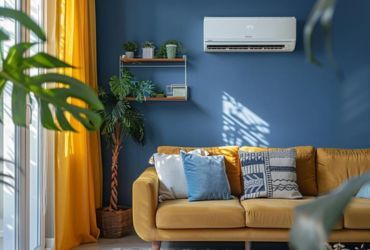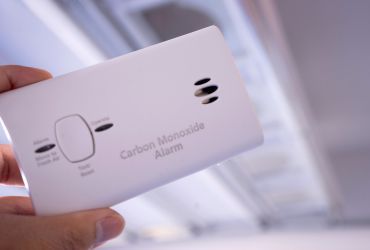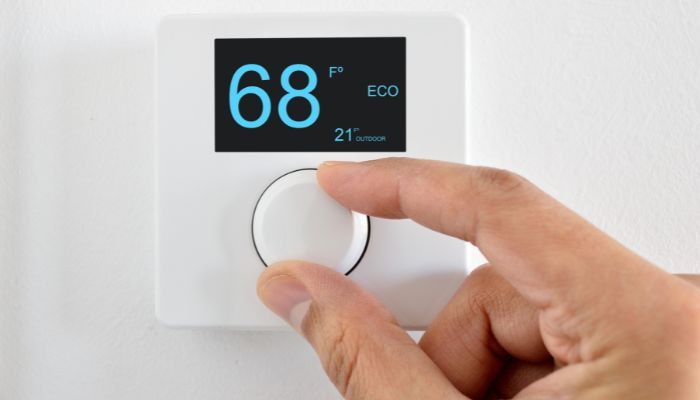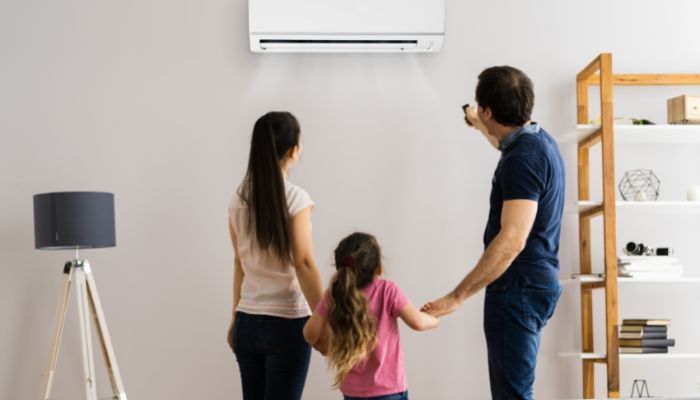What is the average cost of AC Installation in Green Valley?
When it comes to ensuring your home remains a comfortable oasis during the sweltering summer months, installing a high-quality air conditioning system is paramount. However, one of the first questions homeowners in Green Valley often ask is about the costs associated with this essential home upgrade. Understanding the average cost of AC installation is crucial for budgeting effectively and making informed decisions.
At Cummings Plumbing, Heating, Cooling, and Electrical, we are committed to providing our customers with transparent and detailed information about their HVAC needs. In this blog post, we will delve into the various factors that influence the cost of AC installation in Green Valley, helping you navigate your options with ease and confidence. Whether you’re considering replacing an old unit or installing a new system in your home, our insights will guide you through every step of the process.
Factors Influencing AC Installation Costs in Green Valley
Understanding the various factors influencing AC installation costs in Green Valley is essential for homeowners aiming to make informed financial decisions. At Cummings Plumbing, Heating, Cooling, and Electrical, we recognize that multiple elements can impact the overall expense of installing a new air conditioning system.
Firstly, the size and capacity of the AC unit are crucial. Larger homes typically require units with higher capacity, which can increase costs. It’s important to consider your home’s square footage and layout when selecting a system. Our expert team can help determine the optimal unit size for your space.
Another significant factor is the type of AC system you choose. Options range from central air conditioning to ductless mini-split systems, each with varying price points. While central systems are generally more expensive due to additional ductwork, mini-split systems offer flexibility and can be more cost-effective for specific installations.
Installation complexity also plays a role in determining costs. Homes with existing ductwork may experience lower installation expenses compared to those requiring new duct installations. Additional considerations include the energy efficiency of the unit; higher efficiency models may have a higher upfront cost but can result in long-term savings on utility bills.
Lastly, the choice of contractor can influence costs. At Cummings Plumbing, Heating, Cooling, and Electrical, we pride ourselves on offering competitive pricing and quality service. Our dedicated professionals ensure that every installation is completed efficiently and to the highest standards, providing excellent value for our clients in Green Valley.
Comparing AC Installation Prices: Local Green Valley Companies
When it comes to comparing AC installation prices in Green Valley, it’s essential to consider both the quality of service and the cost-effectiveness of local companies. At Cummings Plumbing, Heating, Cooling, and Electrical, we understand that homeowners seek both affordability and reliability in their HVAC installations. Our commitment to transparent pricing and exceptional service sets us apart from the competition.
One of the primary factors influencing price differences among local companies is the level of expertise and the quality of materials used. While some companies might offer lower prices, it’s crucial to ensure that they do not compromise on the quality of the installation. At Cummings Plumbing, our team of experienced professionals guarantees that every installation is performed with precision and care, ensuring long-term satisfaction and performance.
Additionally, the range of services provided by a company can impact pricing. For instance, some companies might bundle additional services such as regular maintenance or warranties with their installations, offering greater value for money. We at Cummings Plumbing provide comprehensive service packages that can include routine check-ups and extended warranties, which can help save costs in the long run.
Another critical consideration is the energy efficiency of the systems offered. Companies that specialize in high-efficiency units may have slightly higher initial costs, but these systems often lead to significant savings on utility bills over time. Our team is dedicated to helping you choose the right system that balances upfront costs with long-term savings, ensuring you get the best return on your investment.
Lastly, we encourage homeowners to request quotes from multiple companies to make an informed decision. While cost is an important factor, the overall value and peace of mind provided by a reputable company like Cummings Plumbing should not be underestimated. Our transparent pricing and commitment to customer satisfaction make us a trusted choice for AC installation in Green Valley.
Cost-Saving Tips for Affordable AC Installation
When planning for an exceptional AC installation in Green Valley, there are several cost-saving tips that homeowners can consider. These strategies not only help in reducing the initial expenses but also ensure long-term savings through energy efficiency and maintenance.
1. Choose the Right System Size
As previously mentioned, selecting an AC unit with the appropriate size and capacity for your home is crucial. An oversized or undersized system can lead to increased costs and inefficient operation. Consulting with Cummings Plumbing can help you determine the perfect fit for your space, optimizing both performance and cost.
2. Explore Energy-Efficient Models
Investing in an energy-efficient air conditioner may have a higher upfront cost, but it can significantly reduce your utility bills over time. Look for models with high SEER ratings, as these are designed to consume less power. This aligns with our previous discussion on energy efficiency being a key factor in cost savings.
3. Take Advantage of Seasonal Promotions
Many companies, including Cummings Plumbing, offer seasonal discounts and promotions. Timing your purchase during these periods can result in substantial savings. Stay informed about ongoing offers by visiting our promotions page.
4. Consider Bundled Service Packages
As covered in our comparison section, opting for bundled service packages that include maintenance and warranties can offer better value. These packages can help you avoid unexpected repair costs and prolong the lifespan of your AC unit.
5. Request Multiple Quotes
Finally, obtaining quotes from multiple companies allows you to compare prices and service offerings. While cost is important, remember that the quality of service and long-term benefits should also guide your decision. For a comprehensive quote, feel free to request a quote from us to ensure you’re getting the best value.
Understanding Seasonal Variations in AC Installation Pricing
When it comes to understanding seasonal variations in AC installation pricing, homeowners in Green Valley can benefit from strategic planning and timing. At Cummings Plumbing, Heating, Cooling, and Electrical, we recognize that AC installation costs can fluctuate throughout the year, and being aware of these trends can lead to significant cost savings.
One of the primary reasons for these seasonal variations is the fluctuation in demand. During the peak summer months, when temperatures soar, the demand for AC installations often increases, which can result in higher prices due to limited availability of technicians and increased workload. Conversely, scheduling your installation during the off-peak seasons, such as fall or early spring, may provide more competitive pricing and flexible scheduling options. This aligns with our advice on taking advantage of seasonal promotions, as many companies, including Cummings Plumbing, offer discounts during these quieter periods.
Another factor influencing seasonal pricing is the availability of inventory. Manufacturers often release new models at specific times of the year, which can lead to price reductions on older models. By staying informed about product releases and industry trends, you may find opportunities to purchase a high-quality system at a reduced price. Our team at Cummings Plumbing is always ready to help you navigate these options and find the best deals available.
Additionally, considering the impact of seasonal energy efficiency can be beneficial. During cooler months, energy costs are generally lower, which can make it an ideal time to invest in a more efficient system that will be ready for the next peak season. As discussed in previous sections, choosing an energy-efficient model can lead to substantial savings on utility bills over time, making it a wise long-term investment.
Lastly, it’s important to request quotes and compare options from different companies throughout the year. By doing so, you can ensure that you’re receiving the most competitive pricing and the best service. At Cummings Plumbing, our commitment to transparency and customer satisfaction means that we are always ready to provide you with the information you need to make an informed decision, regardless of the season.
Cummings Is Green Valley’s Top AC Installation Company
Understanding the various factors that influence AC installation costs in Green Valley is essential for making informed decisions that balance affordability, efficiency, and quality. From choosing the right system size to exploring energy-efficient models, the insights provided by Cummings Plumbing, Heating, Cooling, and Electrical ensure that homeowners are well-equipped to navigate their options effectively. By comparing prices, considering bundled services, and timing installations to take advantage of seasonal trends, you can maximize your investment and enjoy optimal comfort in your home.
At Cummings Plumbing, our commitment to transparent pricing and exceptional service sets us apart. Whether you’re ready to replace an old unit or install a new system, our team of experts is here to guide you every step of the way. We encourage you to request a quote today to explore how we can meet your HVAC needs with precision and care. For more information, visit our website. Trust Cummings Plumbing for reliable and cost-effective AC installation solutions in Green Valley.
Frequently Asked Questions About AC Installation
What factors influence the cost of AC installation in Green Valley?
Several factors influence the cost of AC installation in Green Valley. The size and capacity of the AC unit is a primary factor, as larger homes require more powerful units, raising costs. The type of AC system chosen, such as central air or ductless mini-split, also affects pricing due to differences in installation complexity and materials. Additionally, homes needing new ductwork face higher expenses. The energy efficiency of the unit is another consideration, with efficient models costing more initially but saving on utility bills over time. Lastly, the contractor’s pricing and service quality can influence costs.
How can I get an accurate estimate for AC installation from Cummings Plumbing?
To obtain an accurate estimate for AC installation from Cummings Plumbing, homeowners should request a quote through our website. Our team will consider various factors, including your home’s square footage, layout, and specific cooling needs. We offer transparent pricing and ensure you receive a detailed breakdown of costs, including the type of system, installation complexity, and any additional services. Consulting with our experienced professionals can help you determine the optimal unit size and features for your home, providing a comprehensive and accurate estimate.
Why might AC installation costs vary in Green Valley?
AC installation costs in Green Valley may vary due to several reasons. The level of expertise and quality of materials used by different companies can cause price differences, as some may offer lower prices but compromise on quality. The range of services provided, such as maintenance packages or warranties, can also affect costs. Seasonal variations play a role, with higher demand in peak summer months leading to increased prices. Additionally, the choice of energy-efficient systems may result in higher initial costs but offer long-term savings, contributing to cost variability.
How does Cummings Plumbing ensure quality in their AC installation services?
Cummings Plumbing ensures quality in AC installation services through a combination of expertise, high-quality materials, and comprehensive service packages. Our team of experienced professionals performs each installation with precision and care, ensuring long-term satisfaction and optimal system performance. We offer bundled services that include maintenance and extended warranties, providing added value and peace of mind. By staying committed to transparent pricing and exceptional customer service, we guarantee that every installation meets the highest standards, making us a trusted choice for homeowners in Green Valley.









